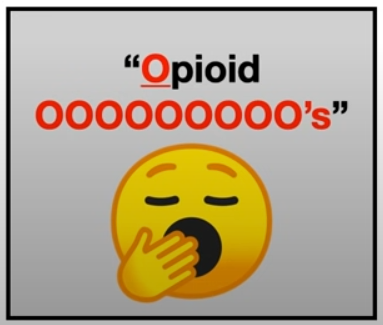Epidemiology
Etiology
- Mostly heroin
Pathophysiology
Clinical features
- CNS arousal and sympathetic hyperactivity
- Tachycardia, hypertension
- Anxiety, insomnia, irritability, agitation
- Mydriasis, yawning, lacrimation, sneezing
- Hyperreflexia, muscle cramps
- Flu-like symptoms
- Rhinorrhea, diaphoresis, piloerection, thermoregulation disturbances (e.g., chills)
- Myalgia, arthralgia
- Gastrointestinal symptoms
- Nausea, vomiting, diarrhea
- Abdominal pain, hyperactive bowel sounds
Mnemonic
Opioid yawning
Neonatal abstinence syndrome
Neonatal abstinence syndrome is caused by maternal drug use during pregnancy (typically opioids) that subsequently leads to a withdrawal reaction in the infant.
Clinical features
- Symptoms usually manifest in the first days of life.
- Flu-like symptoms: fever and sweating
- Gastrointestinal symptoms
- Poor feeding
- Vomiting, diarrhea
- Failure to thrive
- Respiratory symptoms
- Tachypnea, apnea
- Sneezing, nasal congestion
- Sympathetic hyperactivity: hypertension, tachycardia
- CNS stimulation
- High pitched crying, irritability
- Muscle tone and movement disorders (e.g., hyperreflexia, tremor, jerking)
- Seizures
- Uncoordinated sucking reflexes
Diagnostics
Treatment
- Acute opioid withdrawal: methadone/buprenorphine
- Methadone
- full mu-opioid receptor agonist
- It has a long half-life, which allows it to effectively suppress cravings and withdrawal symptoms
- It also blocks the euphoric effects of other opioids by maintaining high tolerance levels
- Adverse effect: Long QT syndromes and torsade de pointes
- Buprenorphine is an opioid partial agonist used for opioid use disorder
- Methadone
Mnemonic
Methadone? The recovering heroin addict I met had one . Buprenorphine boops the morphine
Warning
Naloxone is for opioids overdose. Giving naloxone for acute opioid withdrawal or neonatal abstinence syndrome will result in more severe withdrawal symptoms and is contraindicated.

